Internal documentation is essential to any thriving organization’s toolkit, helping enhance knowledge sharing, operational efficiency, and employee onboarding.
| A study by McKinsey found that employees spend about 1.8 hours every day—equivalent to 9.3 hours per week—searching and gathering information. |
This highlights the inefficiency plaguing many organizations and underscores the need for well-organized and accessible internal documentation. In this blog, we will discuss the types and benefits of internal documentation, explore some best practices and steps to create internal documentation, and see how internal documentation software can help empower your employees.
What Is Internal Documentation?
Internal documentation is created within an organization for internal usage, aimed at capturing and sharing vital information among its members. This can include technical documentation, process guidelines, project plans, company policies, and more.
Internal documentation’s primary objective is to ensure that employees have access to the information necessary to understand their roles, adhere to company procedures, and perform their tasks effectively and efficiently.
For example, a software development company may use its internal wiki to house documentation on coding standards, architecture diagrams, API documentation, sprint planning guidelines, and retrospective templates.
This helps developers, project managers, and other stakeholders have immediate access to the information they need to understand the company’s software projects, contribute effectively, and maintain consistency in coding and project management practices.
Read More: How to Create Online Documentation
Internal vs. External Documentation – The Difference
Both internal and external documentation are crucial for a business. While an internal document caters to employees, an external document is meant to support customers.
Internal documentation is strictly designed for your internal audience, i.e., employees. It comprises information to help employees perform their work efficiently, make informed decisions, be more productive, and support customers with more confidence.
You can enable secure and authorized access to internal documentation using password controls and two-factor authentication.
On the contrary, external documentation aims to help customers resolve their issues related to your products or services. It’s a customer-focused self-help document that saves customers from time-consuming calls and emails for their basic questions.
What Are the Types of Internal Documentation?
You can create several types of internal documentation, depending on your needs and preferences. Let’s take a look at some of these:
Process Documentation
Process documentation outlines the workflow within an organization, detailing the steps required to complete specific tasks or operations. It guides employees to understand how various business processes are carried out, ensuring consistency and efficiency in task execution.
This type of documentation usually includes flowcharts, diagrams, and step-by-step instructions that provide a clear roadmap of the processes, making it easier for new and existing employees to follow.
Project Documentation
It includes all the documents produced during the life cycle of a project, serving as a comprehensive record of planning, execution, and closure.
It covers project plans, scope documents, budgets, schedules, status reports, meeting minutes, and post-project reviews. Project documentation ensures everyone can access the same information, enabling better communication and collaboration among team members.
It also assists in project management by tracking progress, identifying potential issues early, and documenting lessons learned for future projects.
Technical Documentation
It aims to provide users with instructions on using a product or system. It is often used in software development, engineering, and other technical fields to guide users through complex systems or products.
Technical documentation can include user manuals, installation guides, API documentation, system architectures, code documentation, and FAQs. Technical documentation ensures that products are used effectively and safely, reducing the need for extensive customer support.
Training Documentation
It is created to support the learning and development of employees within an organization. It includes training manuals, e-learning modules, instructional videos, and presentations to educate employees on new systems, software, policies, or job roles.
Training documentation is essential for onboarding new hires, upskilling existing employees, and ensuring staff members have the necessary knowledge and skills to perform their jobs effectively. Well-structured training materials contribute to faster learning curves and a more competent workforce.
HR Documentation
It pertains to all documents related to managing an organization’s human resources. This includes a wide selection of documents, like job descriptions, employment contracts, performance evaluations, disciplinary records, benefits paperwork, and compliance documents.
HR documentation is critical in defining job roles, managing employee performance, and ensuring legal compliance with labor laws and regulations.
It also includes policy manuals that outline the organization’s policies on workplace behavior, discrimination, harassment, and employee benefits, ensuring that both management and employees are aware of their rights and responsibilities.
Benefits of Internal Documentation
Whether a small start-up or a large corporation, documenting your internal processes can provide multiple benefits.
Let’s look at some of the significant benefits of internal documentation and see how it can help your business thrive.
Improves Employee Productivity
Finding information when working on an essential task or project seems like an uphill task, especially when employees resort to time-consuming emails and calls. This directly impacts their productivity and the tasks they are working on.
Internal documentation ensures employees have all the necessary information at their disposal right when needed. As knowledge discovery gets convenient, employees are relieved from the endless email threads and calls and can devote all their time to the tasks that matter.
Aids Training & Onboarding
Internal documentation can strengthen your onboarding process by enabling new hires to self-learn about your company culture, policies, processes, and projects.
Like an office buddy, it’s always there for new employees, guiding them as they take their first steps in their new role. And most importantly, it makes them self-reliant, so they can overcome challenges independently without depending too much on seniors or peers.
Boosts Knowledge Retention & Transfer
Knowledge transfer and retention can be significant hurdles to companies as employees leave or get transferred. Internal documentation can help preserve critical information held by employees that would otherwise be lost.
It ensures that the valuable knowledge gained by employees over their tenure is shared across teams for their benefit. This is a great way to save your knowledge assets and retain them for future use by employees.
Streamlines Processes & Operations
Efficient operations are essential for organizations to remain competitive and profitable. Internal documentation can streamline these aspects by providing employees with clear guidelines and procedures.
With internal documentation, you can minimize the risk of errors, leading to improved productivity and better decision-making. Tasks get completed on time, and deadlines never skip project deliveries.
FREE. All Features. FOREVER!
Try our Forever FREE account with all premium features!
How to Write Good Internal Documentation
Well-written internal documentation can help employees perform their jobs to the best of their abilities and ensure consistency across the organization.
In this section, we’ll see how to write effective internal documentation.
Define Your Purpose & Audience
Before you start writing, defining the document’s purpose and the intended audience is essential. Knowing the purpose will help guide the content outline, while understanding the audience will help you tailor the language and tone.
When defining the purpose and audience, consider asking yourself a few questions like:
- What is the goal you want to accomplish with this document? Are you trying to train new employees, cultivate collaboration, or streamline operations?
- Who will be using the documentation? Is it intended for a specific audience, a department, a role, or the whole organization?
- How detailed do you want the document to be? What is your employees’ current knowledge level?
Asking these questions will empower you to dive deep into the matter and extract insights that will be useful throughout the documentation process.
Set Up a Structure
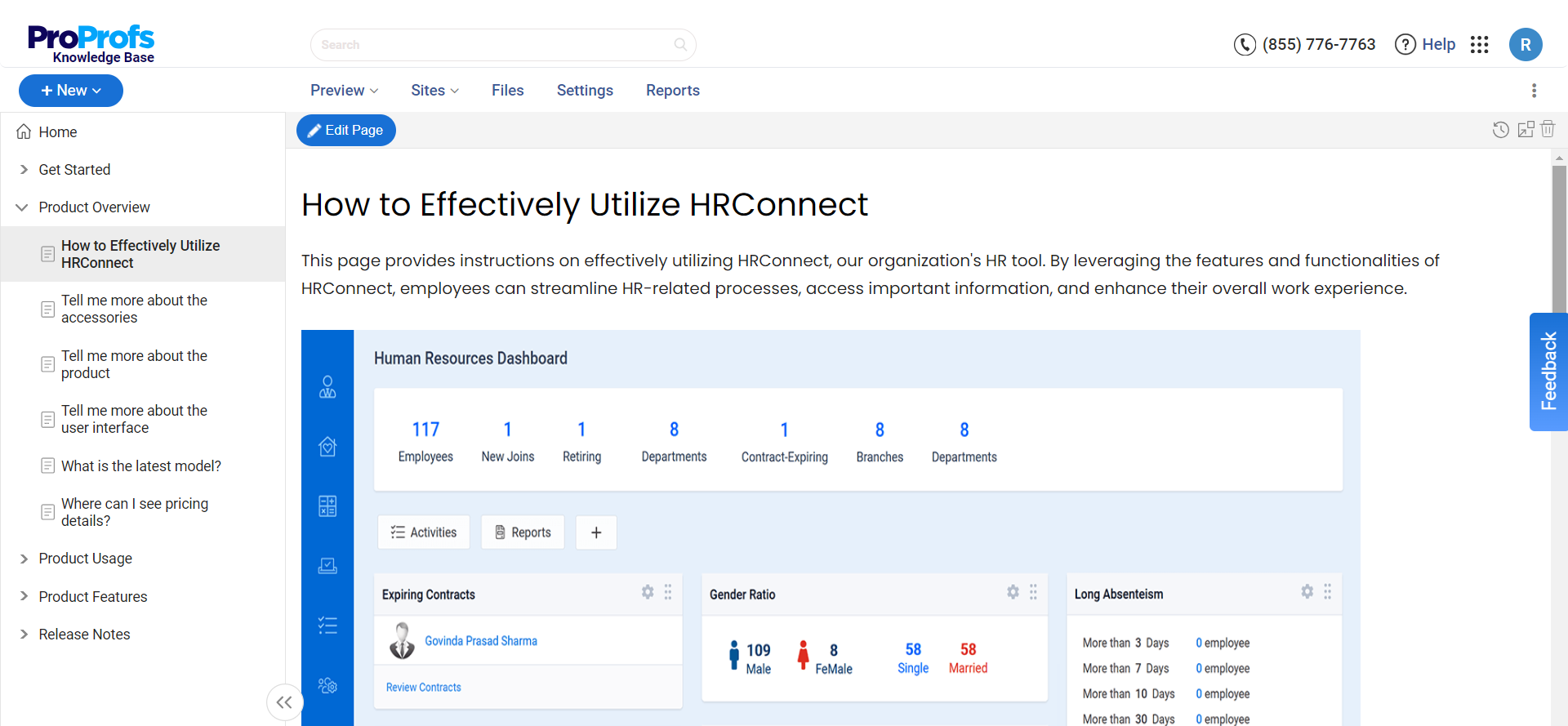
Before you start writing, creating a standard structure for your documentation is a good idea. It will give your team a defined path to follow when creating content and prevent them from losing the end goals.
When building a structure, include sensible categories that flow logically from start to finish. Create a home page displaying the critical topics covered in the document and an extensive search bar for employees to look for information quickly.
You can also have a table of contents to help employees navigate the document in a few clicks. Additionally, when setting up a structure, create guidelines for writers to follow when writing content.
For example:
- Paragraphs should be short and straightforward
- Use bulleted lists to make content accessible to consume
- Ensure there is breathing space in articles
- Keep the titles action-oriented
- Use visuals for an interactive learning experience
These are some of the tips that can strengthen your document’s structure, making it appealing as well as easy to follow. When creating a structure for your document, you can utilize ready-made templates. For example, ProProfs Knowledge Base offers a range of pre-designed templates.
These templates are easy to use and give a ready-made framework, saving time and effort.
Bring a Dedicated Team on Board
Creating detailed documentation is not a single-person job. For a single individual, it will be too exhausting to work on the document from scratch and launch it successfully without support from others.
You need a full-fledged team who can work cohesively, collaborate on articles, and share their expertise. Bringing a team together means identifying the critical knowledge holders across departments, assigning them specific roles, and letting them work under a single roof to achieve an optimal output.
Now, these roles can be anything from contributors and editors to administrators and viewers. If you want to create a different position for a user, you can do that, too. Some of the best documentation tools allow you to create custom user roles depending on their specific needs.
For example, let’s say you want a team member to design your document. In that case, you can create a custom role of a “Designer” and assign it to relevant individuals.
Review the Content Before Publishing
Mistakes are inevitable, especially when there are humans involved. It’s not surprising to see writers and editors making factual, structural, or grammatical errors here and there. When caught at the right time, these mistakes can be rectified to ensure the final version that goes out for publication is flawless.
A comprehensive platform like internal documentation can be hard to review. There is also a possibility that a few articles might slip through the cracks during the review process. That’s why you need a systematic review workflow to bring transparency around what’s pending with whom, what’s good to go, and what’s still under progress.
Setting up a review workflow means allowing team members to assign a unique status to every article that aligns with its stage.
For example, a writer still working on an article can set the status as “In Progress,” while an article completed and given for review can be put under “Ready for Review.” It’s one of the easiest ways to ensure all articles pass through the review cycle before going live!
Create a Bullet-Proof Security System
Internal documentation usually contains sensitive or confidential information, so protecting it against unauthorized usage is essential. There might be some information that you don’t want all your teams to access.
For example, the development team might not want critical project-related information to be available to other departments. Similarly, your sales team might be apprehensive about sharing lead information and sales figures with other teams.
In such cases, deploying a security system that ensures only authorized individuals can access the content is best. You can add rules and conditions at the page or folder level to restrict or allow access only to a selected group of people.
These rules are helpful in controlling who can and cannot access specific articles. Depending on the team, user, viewing device, and other criteria, you can set specific conditions to display or hide content.
You can also secure the internal documentation system from external usage by following a few simple tips:
- Set password controls to ensure access by authorized individuals only
- Use two-factor authentication to level up security
- Set IP restrictions to allow specific access.
- These simple hacks protect your internal documentation from unwanted access and malicious activities.
These tips will help you build a secure internal document.
Keep Updating the Document
Internal documentation is not a “one-and-done” task. Regular updates are needed to keep the content relevant as your organization grows and employee needs change.
Setting up a system for checking for regular updates and content hygiene will ensure that your document remains valuable and relevant.
You can establish a schedule for reviewing and updating the documentation, depending on the frequency of changes. This is where reports can help.
Built-in reports offered by the best document collaboration tools provide comprehensive insights into the overall content performance. These reports can be generated weekly, monthly, and yearly to track key metrics like article downvotes, failed searches, total reads, and broken links.
As you analyze these metrics, you will be better able to identify the strengths and weaknesses of your documentation and make necessary adjustments to keep the quality intact.
Best Practices for Writing Internal Documentation
Now that we know the steps needed for internal documentation, let’s explore some best practices you must keep in mind.
Effective internal documentation ensures the information is useful, accessible, and easily understood by its intended audience.
Here are some best practices to consider:
Tailor Content to Your Audience’s Needs
Tailor your documentation’s language, tone, and complexity to suit your audience’s knowledge level and needs. Understanding who will be using the documentation helps in making it more relevant and user-friendly.
Be Clear & Concise
Avoid jargon, unnecessary words, and overly complex sentences. Aim for clarity and brevity to make the documentation easy to read and understand. Clear headings, bullet points, and numbered lists help organize information logically.
Add Visuals Where Appropriate
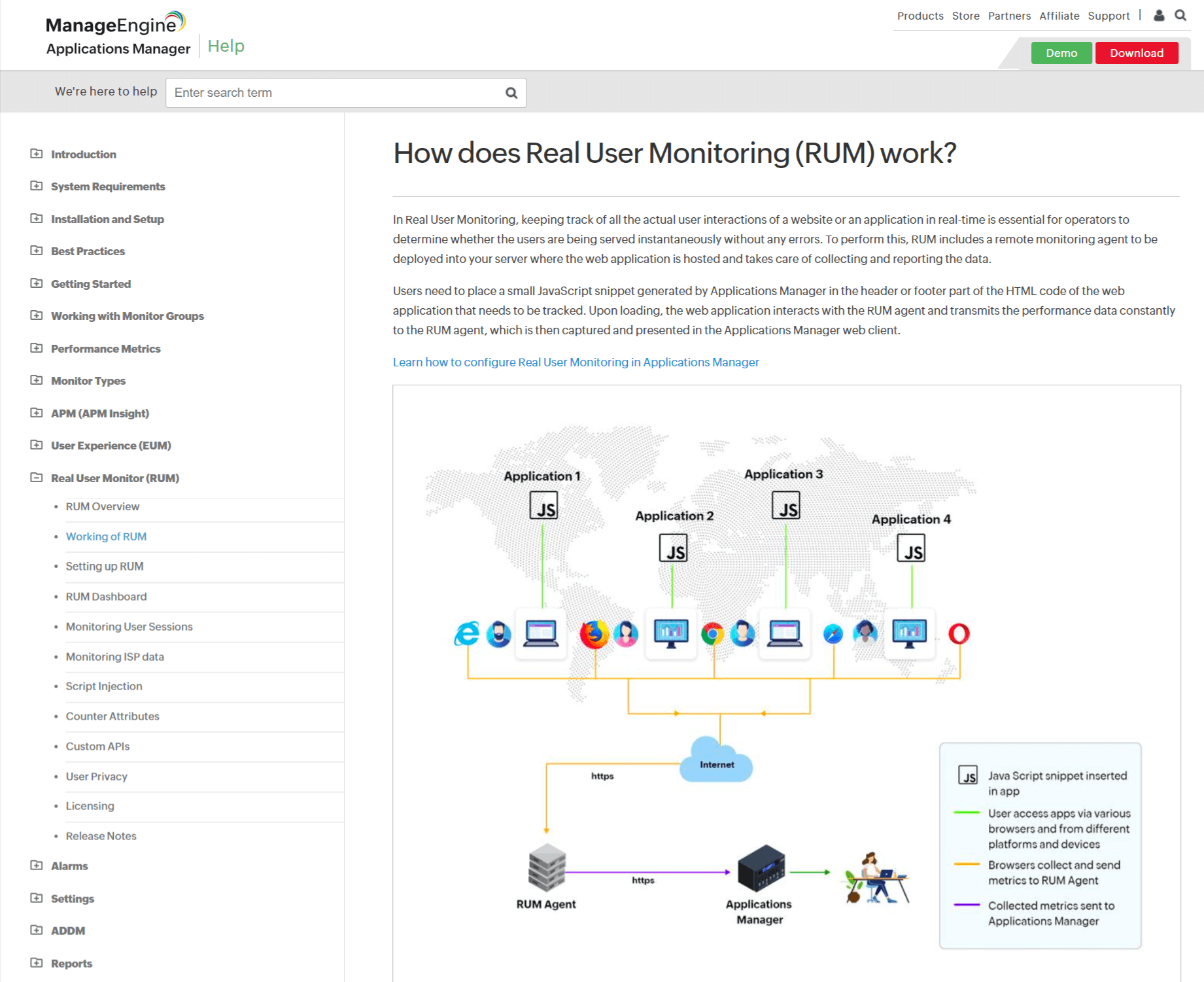
Include diagrams, screenshots, flowcharts, and videos to complement text and illustrate complex concepts. Visual elements can significantly improve comprehension and retention of information.
Maintain Consistency
Use a consistent format, style, and voice throughout your documentation. Visual and textual consistency makes documents easier to follow and more professional. Create a style guide to ensure uniformity across all internal documentation.
Make It Easily Accessible
Save your documentation in a centralized, easily accessible location. Whether it’s a company wiki, intranet, or cloud storage, ensuring your teams can quickly find the information they need is crucial to the documentation’s usefulness.
Keep It Up-to-Date
Regularly review and update your documentation to reflect process, tool, or personnel changes. Outdated information can lead to confusion and inefficiency, so assign responsibility for maintaining each piece of documentation.
Encourage Feedback & Collaboration
Involve stakeholders and potential users in creating and reviewing. Feedback from actual users can highlight areas of improvement and ensure the documentation meets their needs.
Collaboration tools can also facilitate this process by allowing multiple contributors and feedback in real time.
Include Searchable Text
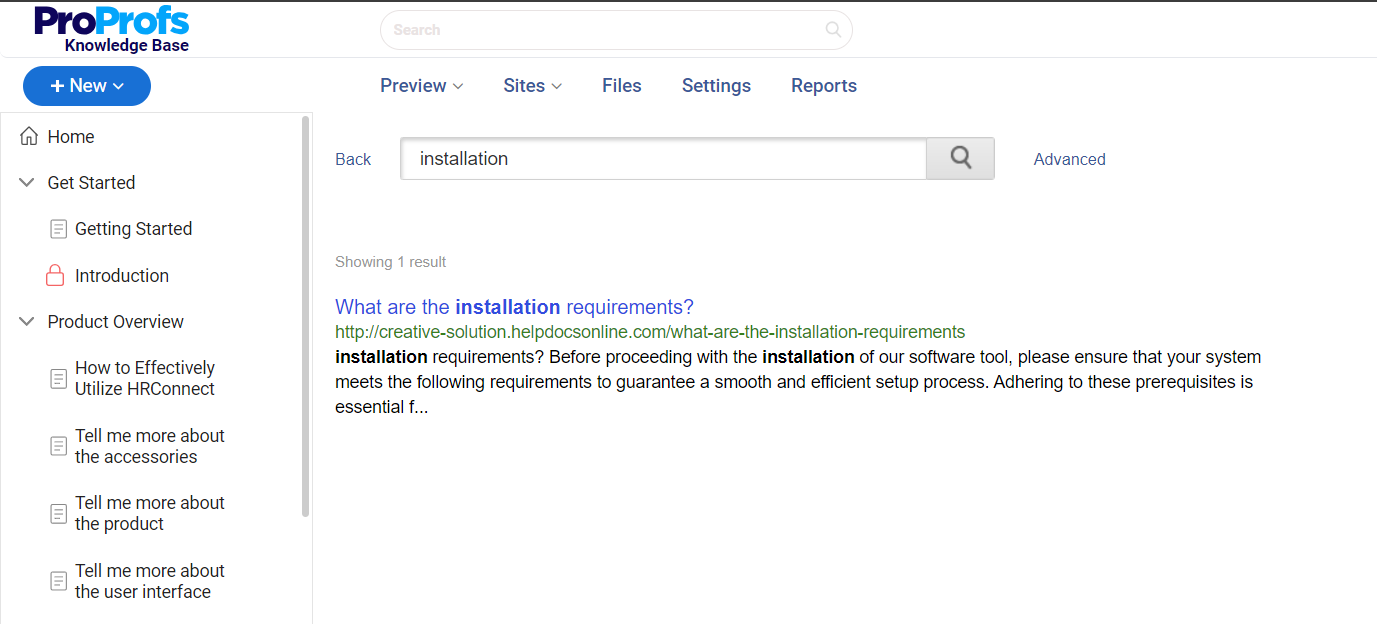
Ensure your documentation is searchable by including relevant keywords and phrases that users might input when seeking information.
A searchable database saves time and increases the efficiency of information retrieval.
Incorporate Real-life Examples & Scenarios
Include examples, use cases, and scenarios to illustrate how specific guidelines or processes apply in practice. This can help users better understand abstract concepts and see the relevance of the documentation to their everyday work.
Prioritize Security & Privacy
Be aware of the sensitivity of the information included in your documentation. Restrict access to sensitive or confidential information as necessary and ensure that your documentation practices comply with privacy laws and company policies.
Examples of Internal Documentation
Are you looking for some inspiration? Let’s explore some examples of internal documentation.
Employee Handbooks
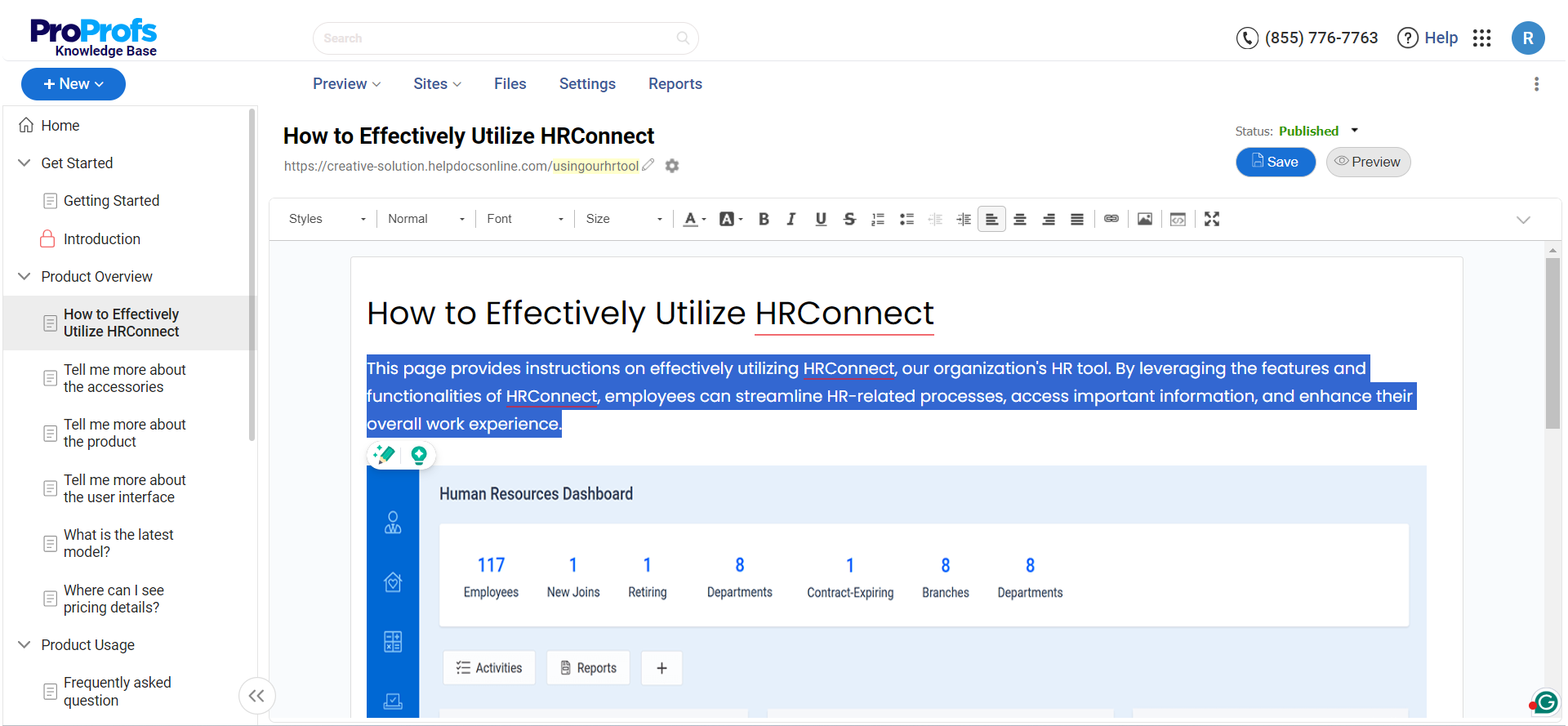
ProProfs uses the in-house Knowledge Base software to simplify creating, managing, and sharing employee handbooks. It allows it to quickly assemble comprehensive and professional handbooks that are easily accessible to employees.
It uses simple, jargon-free language to make the content more accessible and understandable. The AI-powered WYSIWYG text editor ensures that the content creation is fast and error-free.
Process Documentation
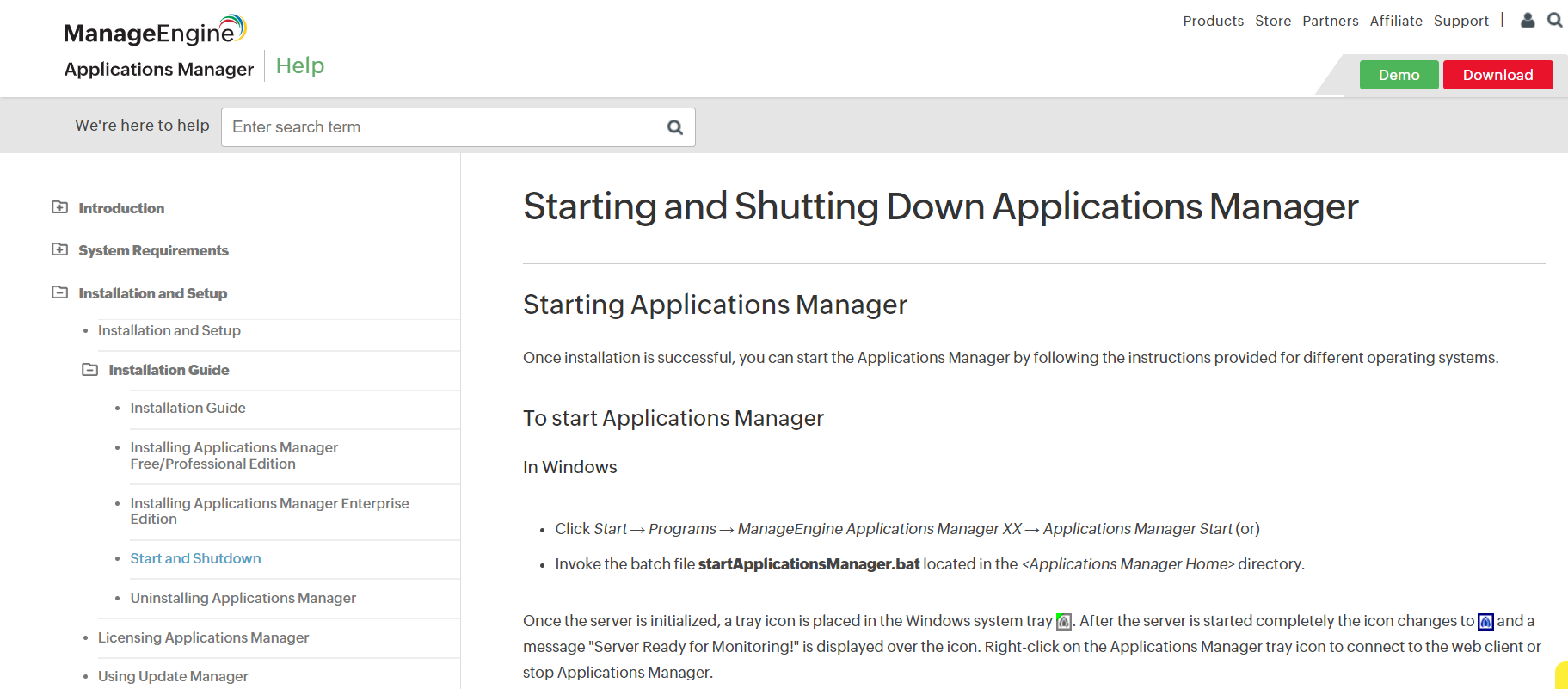
Manage Engine’s comprehensive guide provides detailed instructions on how to start and shut down the Applications Manager. The writing style is technical and instructional, aimed at users with some technical knowledge.
The language is clear and concise, making it easy for users to understand the steps. The instructions are written in an active voice, which is direct and engaging. It is well-structured, with clear headings and subheadings that guide the reader through the process.
It provides separate instructions for different operating systems, namely Windows and Linux, ensuring the content is relevant to the user’s context. The page uses bullet points for listing steps, which makes the content easy to follow.
Project Documentation
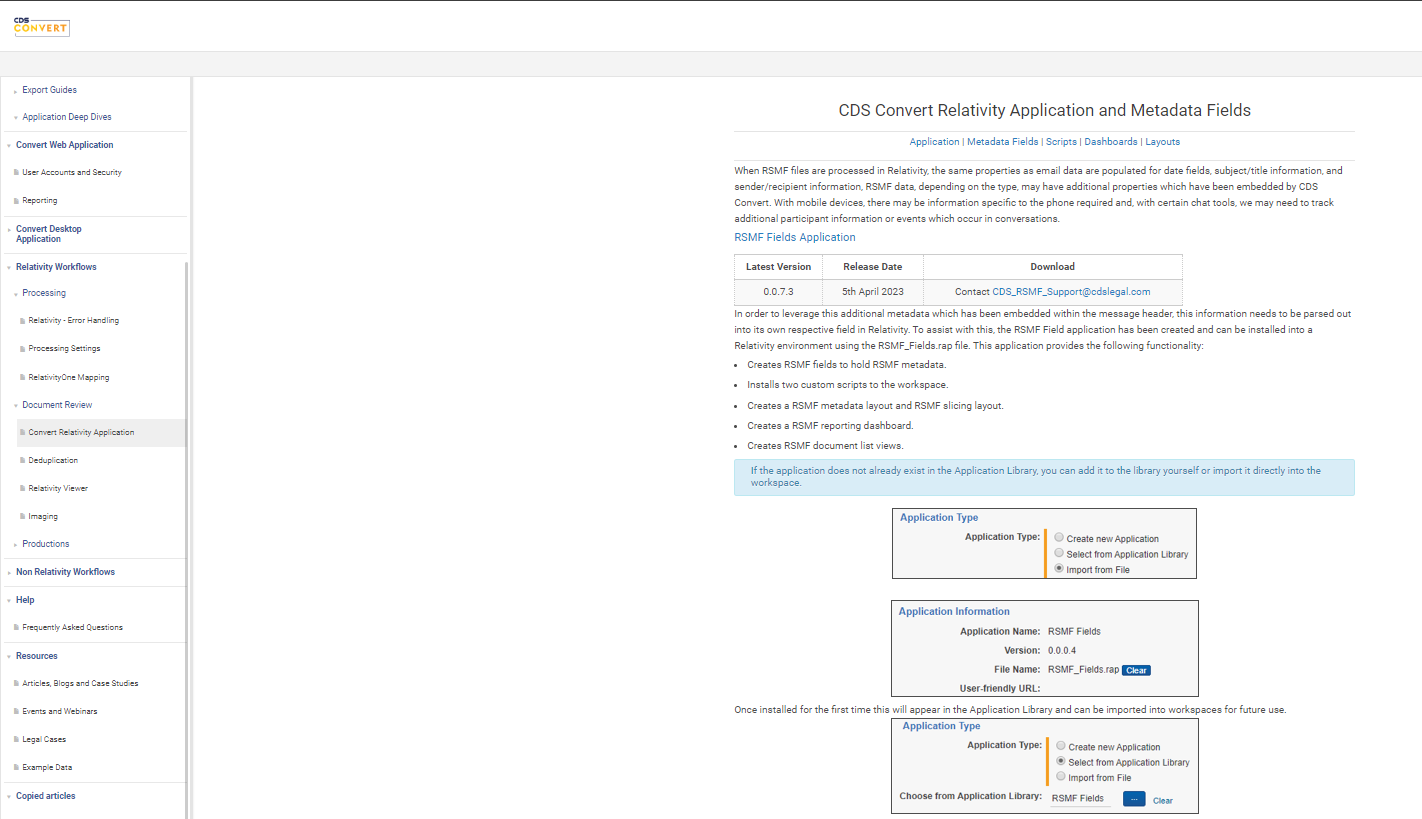
The Internal Documentation page by CDS Convert provides information on customizing the user interface in Relativity.
The writing style is concise and technical, focusing on developer-specific details. The page elements include functions like “getClickTrackingElements,” likely related to tracking user interactions.
The documentation targets developers working on customizing the UI in Relativity, offering specific guidance on internal functions and processes within the platform.
Create Comprehensive Internal Documentation to Enhance Knowledge Sharing!
By now, you should know that internal documentation is crucial to making your employees’ lives hassle-free and improving internal customer service.
It helps you foster a knowledge-sharing culture, onboard new employees smoothly, and, most importantly, prevent information silos. To create internal documentation, set the right goals to drive your efforts in the right direction.
ProProfs Knowledge Base enables easy article creation and organization into categories, and an intuitive search function ensures your employees can find the information they need quickly and effortlessly.
Its access controls and collaboration features mean that the right people can always access the right information and contribute their knowledge, ensuring your documentation grows and evolves with your organization.
 Tips
Tips
We’d love to hear your tips & suggestions on this article!
FREE. All Features. FOREVER!
Try our Forever FREE account with all premium features!

 We'd love your feedback!
We'd love your feedback! Thanks for your feedback!
Thanks for your feedback!







